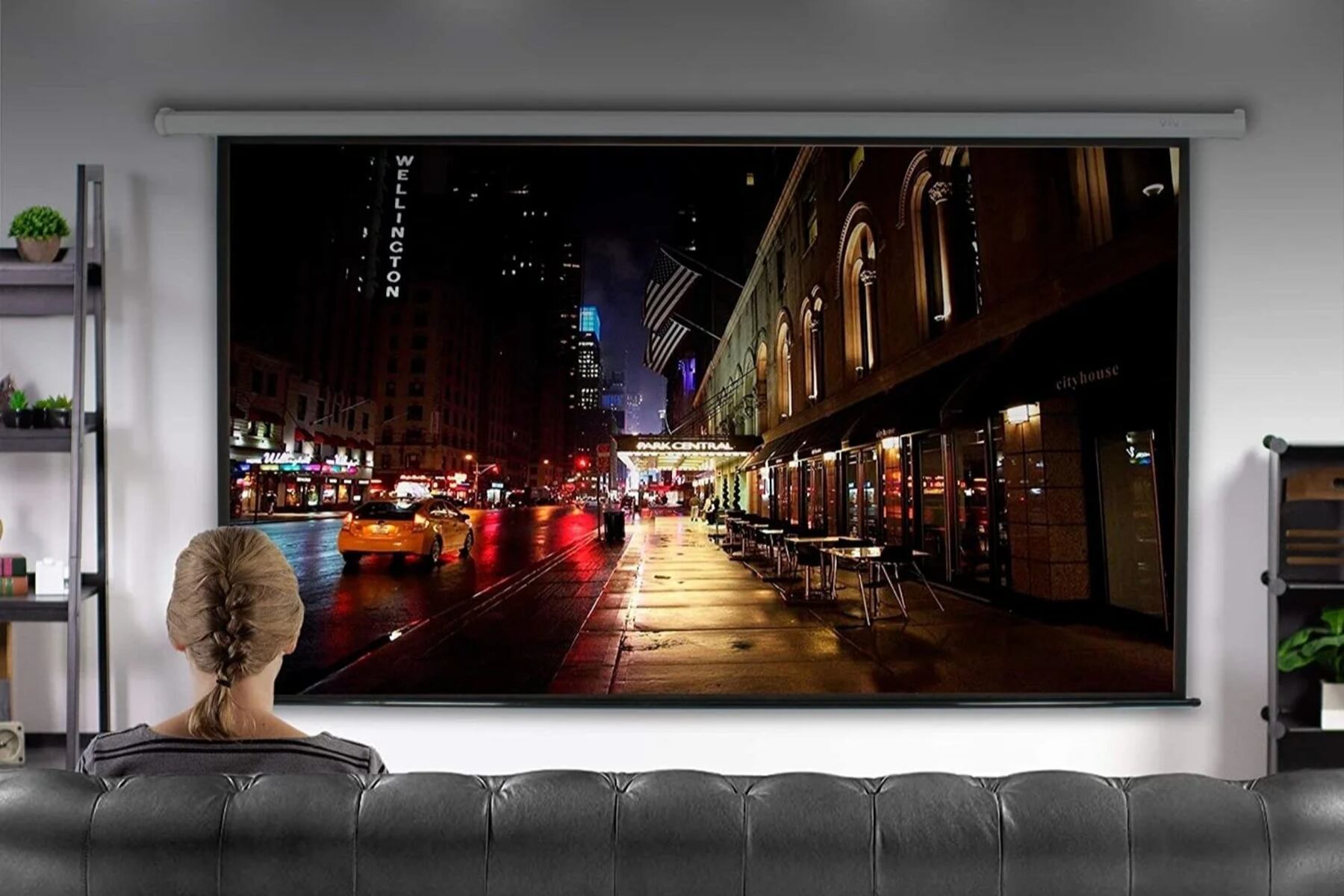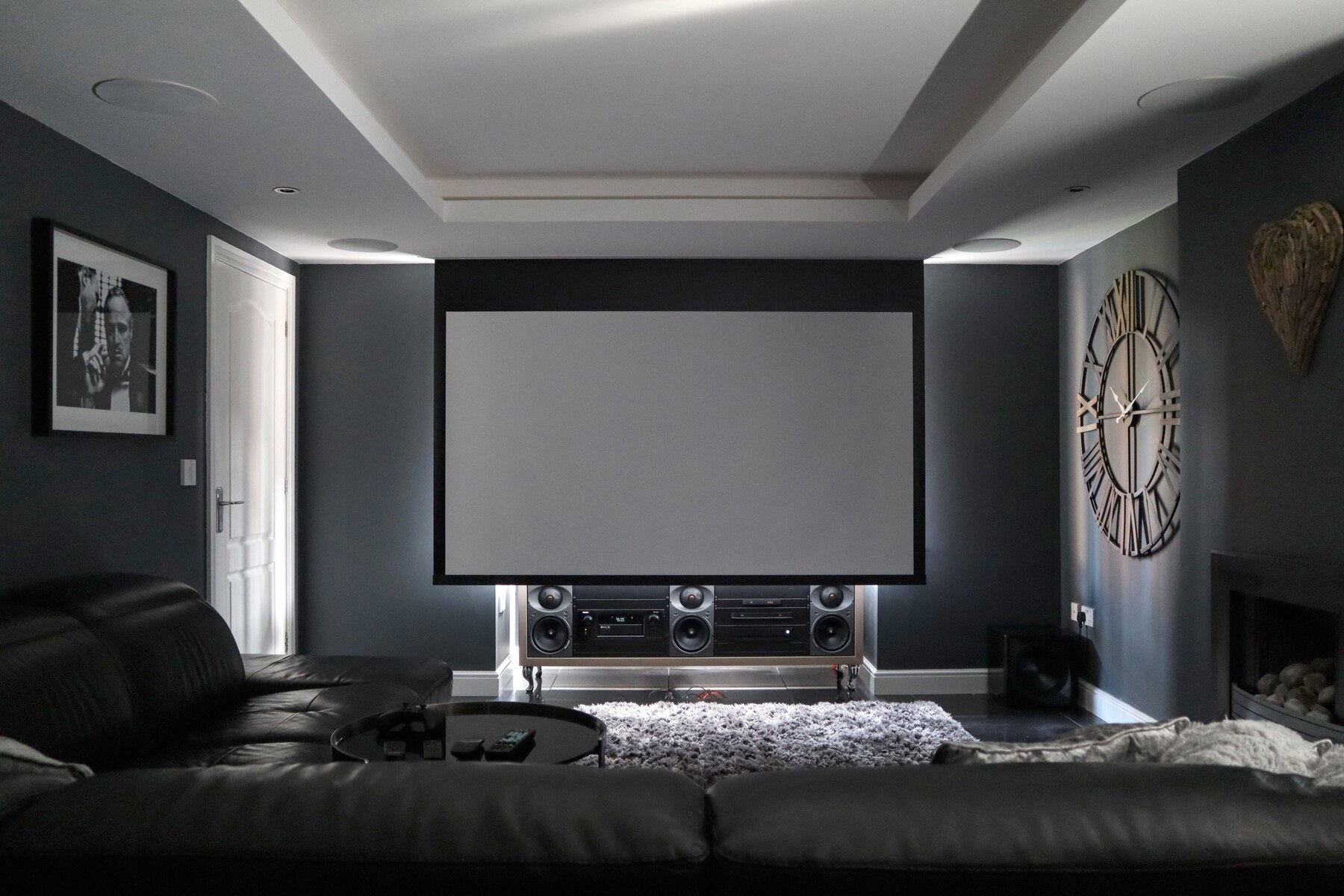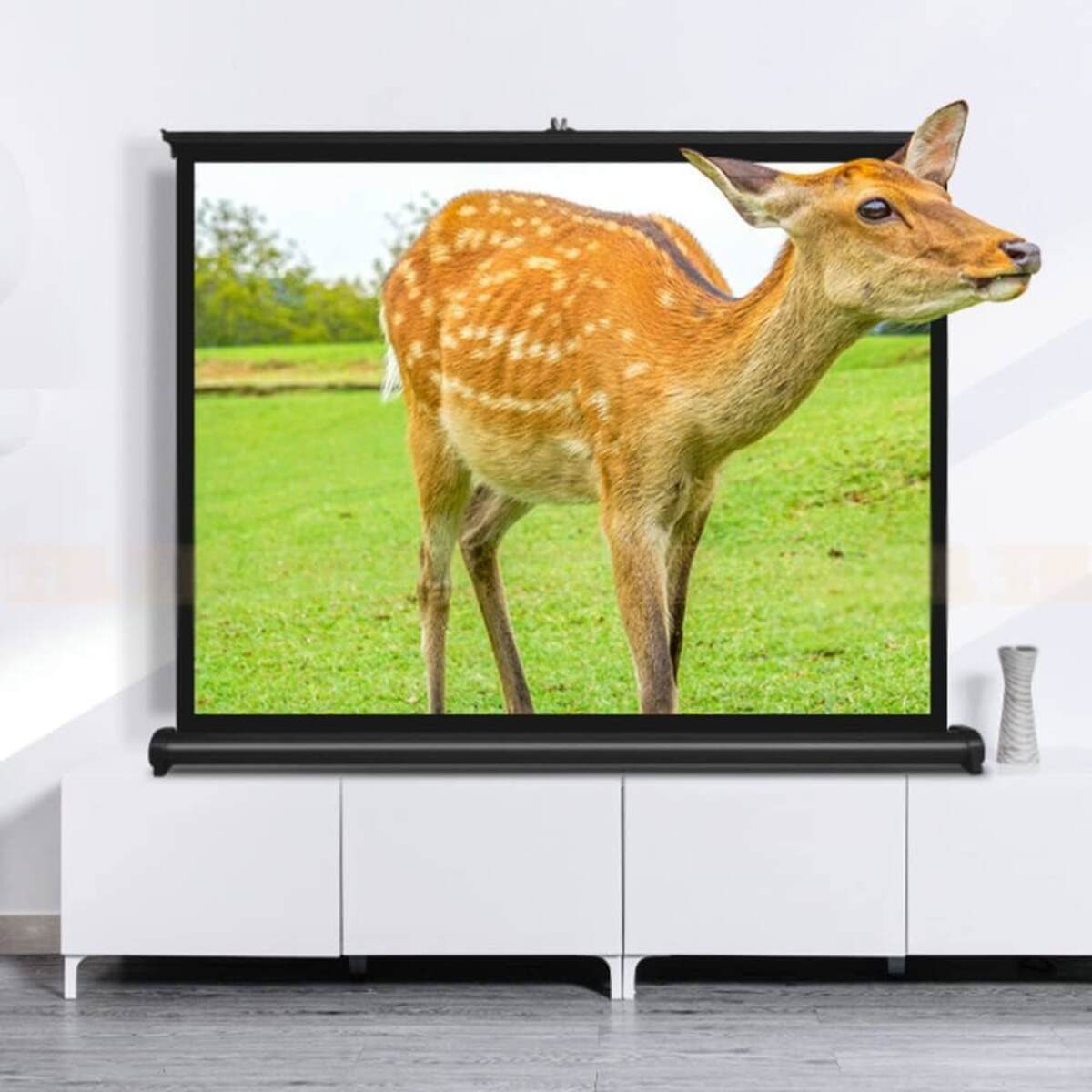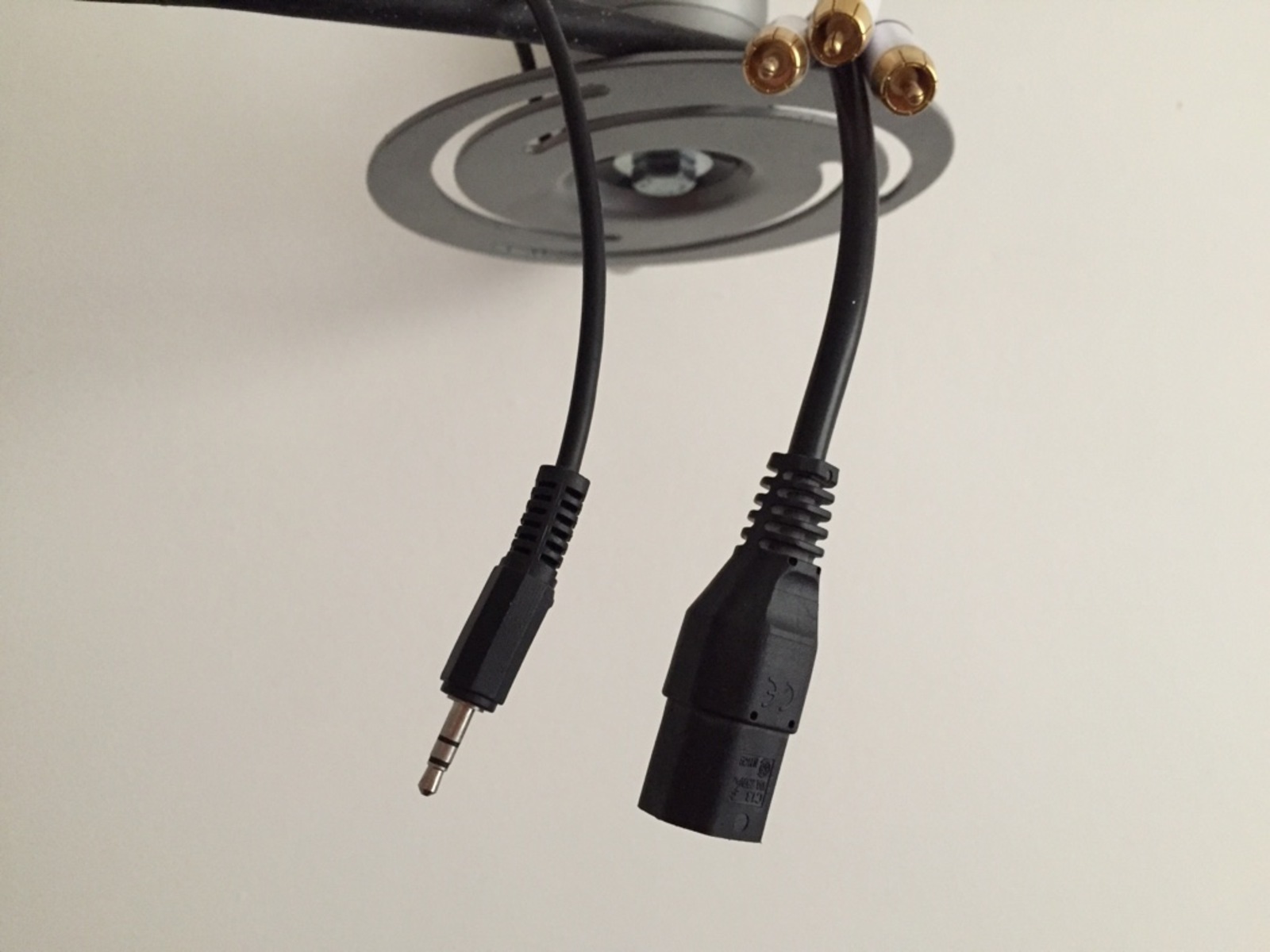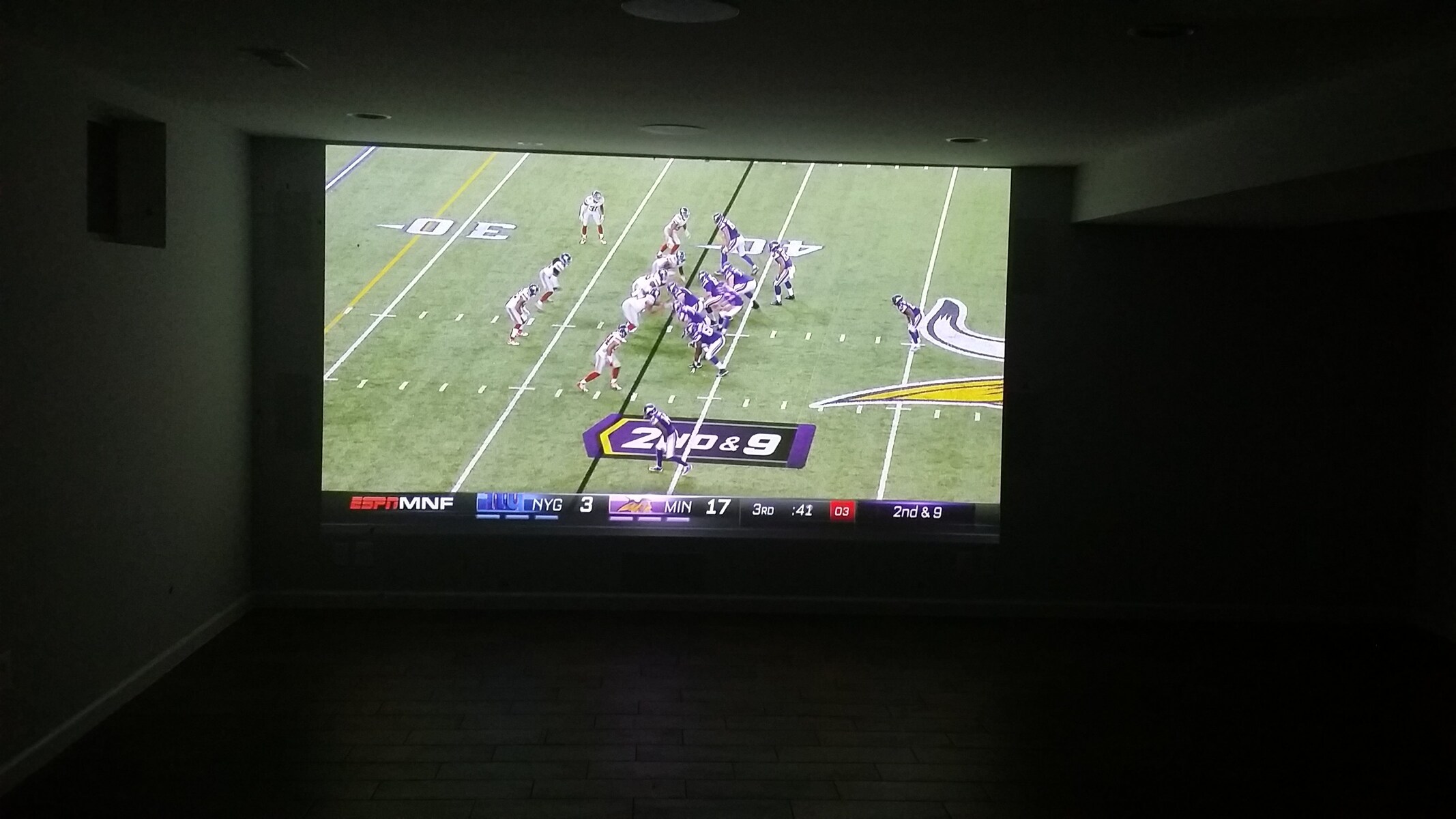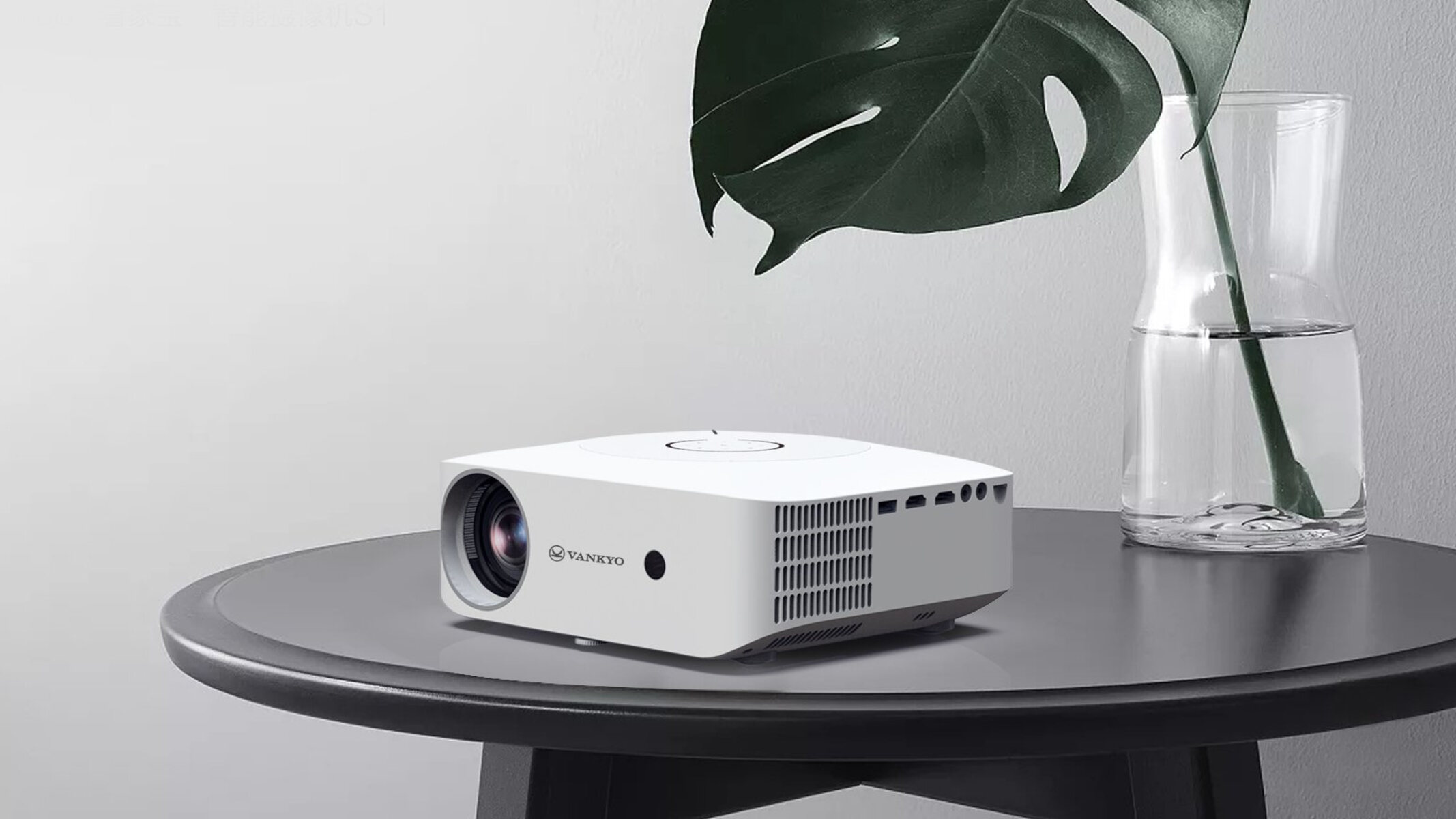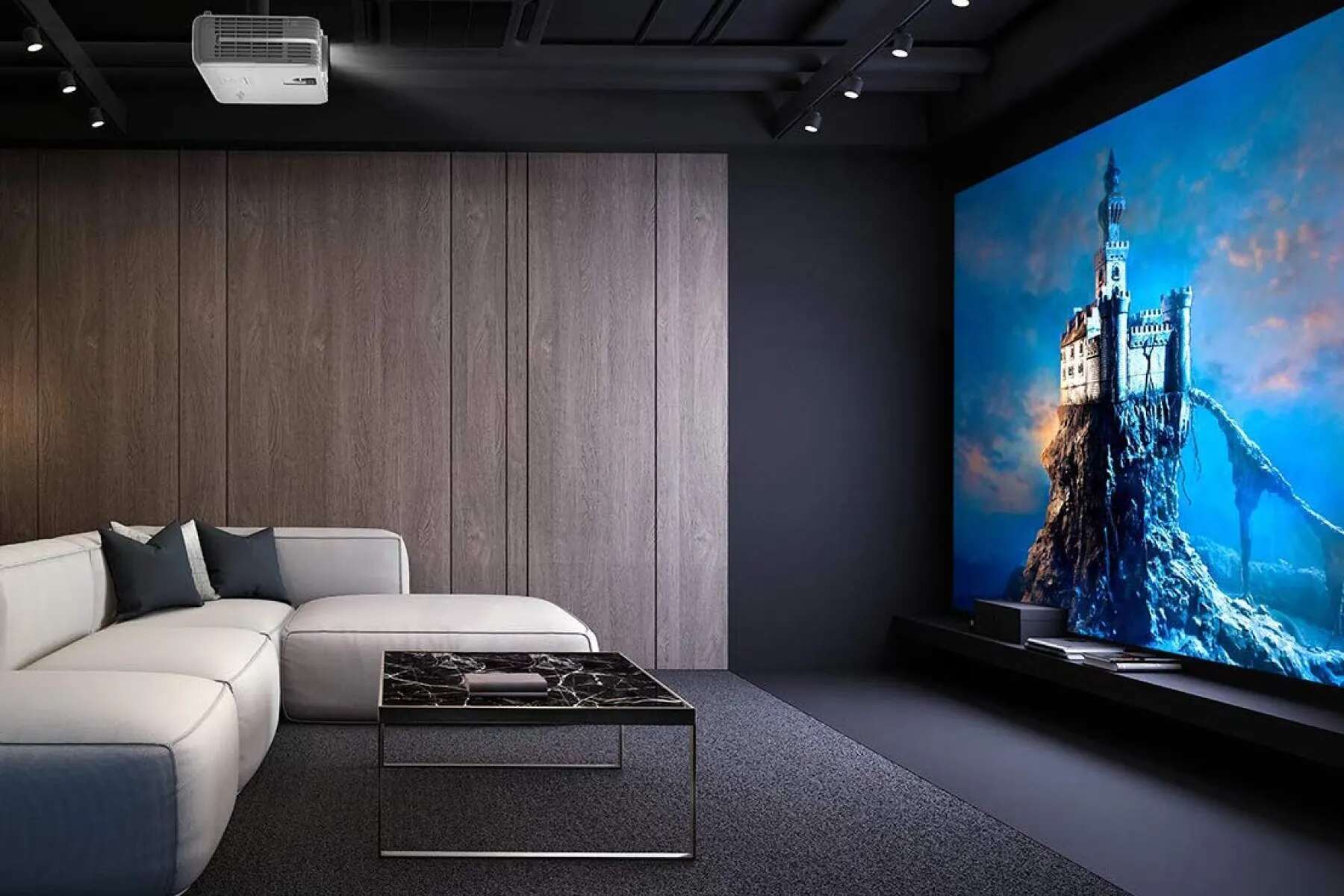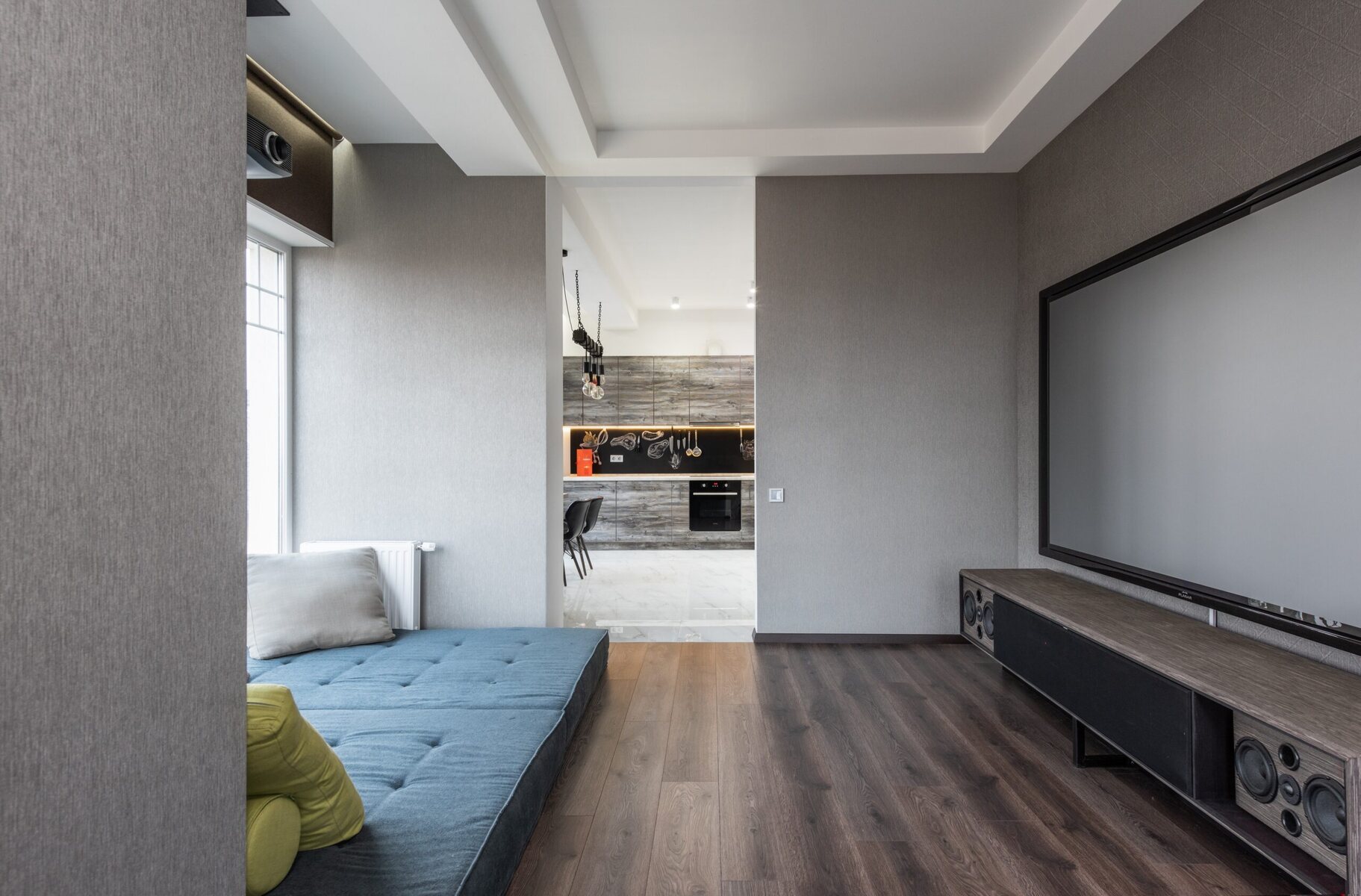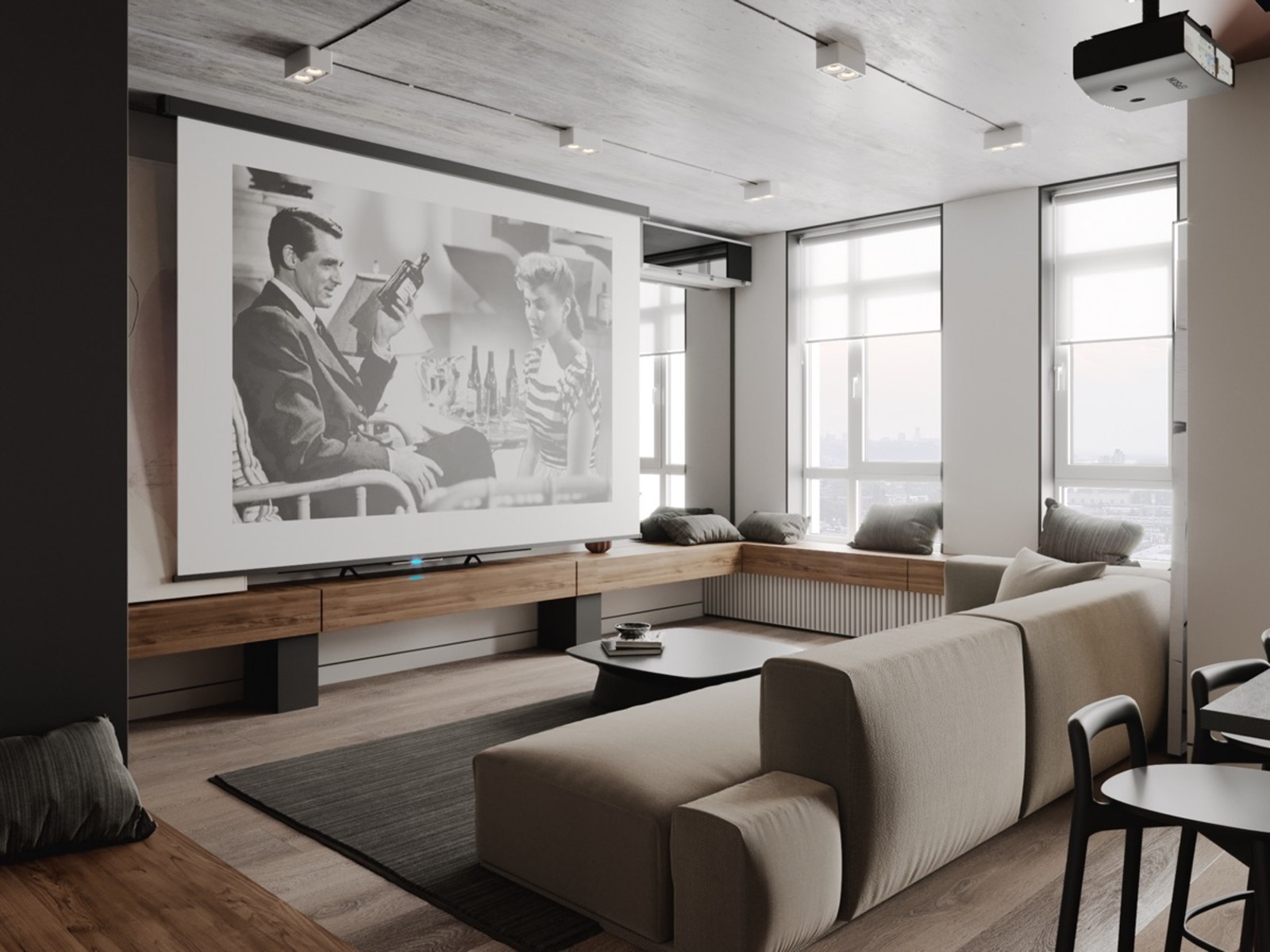Introduction
Welcome to our guide on how to raise a projector screen! Whether you’re setting up a home theater or preparing for a presentation, knowing how to properly raise and use a projector screen is essential for a top-notch viewing experience. In this article, we will walk you through the steps and provide helpful tips to ensure a smooth process.
Choosing the right projector screen is crucial for achieving optimal image quality and viewing pleasure. There are several factors to consider, such as screen size, aspect ratio, and gain. We will delve into these aspects in our upcoming sections to help you make an informed decision.
Understanding the different types of projector screens is also essential. Manual projector screens are operated manually, typically using a pull-down mechanism. Electric projector screens, on the other hand, are operated electronically with the push of a button. Each type has its advantages and considerations, and we will guide you through the steps of raising both types.
Before you start raising a projector screen, it’s important to gather the necessary tools and equipment. You may need a ladder or a sturdy platform, depending on the height of your screen. Additionally, having the right screws, brackets, or mounting hardware is crucial for a secure and stable installation. We will provide a comprehensive list of tools you’ll need in our later sections.
Throughout this guide, we will provide step-by-step instructions on how to raise both manual and electric projector screens. We’ll also address common issues you may encounter and provide troubleshooting tips to help you overcome them.
Once your projector screen is raised, it’s important to properly maintain and care for it. Regular cleaning and correct storage can prolong the lifespan of your screen and ensure optimal performance. We will share some key maintenance tips to keep your projector screen in top shape.
Now that we’ve covered the introduction, let’s delve into the various aspects of raising a projector screen, starting with choosing the right screen for your needs.
Choosing the Right Projector Screen
When it comes to choosing the right projector screen, several factors need to be considered to ensure an immersive viewing experience. Let’s explore these factors in detail.
First off, screen size is a crucial consideration. The screen should be large enough to provide clear visibility and legibility from all angles. Measure the available space and determine the ideal screen size based on the viewing distance and room dimensions. Keep in mind that a larger screen may require a higher resolution projector for optimal image quality.
Aspect ratio is another essential factor to consider. The aspect ratio determines the width and height proportions of the screen. The two most common aspect ratios are 16:9 and 4:3, with 16:9 being the standard for widescreen content. Choose an aspect ratio that is compatible with the content you will be displaying.
Next, consider the gain of the screen. The gain refers to the screen’s ability to reflect light back to the viewer. A higher gain value results in a brighter image, but it can also create hotspots or uneven lighting. For rooms with controlled lighting conditions, a higher gain screen may be suitable. In rooms with ambient light, a lower gain screen is recommended to minimize glare.
Additionally, think about the material of the screen. Different materials offer different advantages. White matte screens provide consistent color reproduction and wide viewing angles. Gray screens enhance contrast and black levels, making them ideal for rooms with ambient light. Acoustic transparent screens allow speakers to be placed behind the screen for improved audio quality.
Budget is also an important consideration. Projector screens come in a wide range of prices, and it’s essential to find a balance between quality and affordability. Consider your budget and look for screens that provide the best value for your money.
Lastly, keep in mind the installation requirements. Some screens can be easily mounted on walls, while others may require a ceiling mount or a specially designed frame. Assess the installation options available in your space and ensure that the chosen screen can be easily and securely installed.
Now that you have a better understanding of the factors to consider, you can confidently choose the right projector screen that meets your requirements and enhances your viewing experience.
Understanding the Different Types of Projector Screens
When it comes to projector screens, there are different types available to suit various needs and preferences. Let’s explore the different types and their characteristics to help you make an informed decision.
The most common types of projector screens are manual and electric screens. Manual screens operate using a pull-down mechanism. They are typically more affordable and straightforward to install. With a manual screen, you can easily adjust the height to your desired position. These screens are a popular choice for home theaters and small conference rooms.
Electric screens, on the other hand, offer a higher level of convenience. They are operated electronically with the push of a button or through a remote control. Electric screens are ideal for larger spaces or commercial settings where frequent adjustments are required. They provide a smooth, motorized operation and can be easily integrated into a project control system.
Another type of projector screen is the fixed frame screen. As the name suggests, these screens are permanently fixed in place, creating a seamless and tensioned surface. Fixed frame screens offer a sleek and professional look and are suitable for dedicated home theaters or conference rooms. They provide a flat, wrinkle-free viewing surface for optimal image quality.
Portable screens are designed for easy transport and quick setup. These compact screens are lightweight and often come with a carrying case. Portable screens are popular for outdoor events, classrooms, or presentations on the go. They offer flexibility and convenience, allowing you to set up your screening area wherever you need.
Rear projection screens are designed to be viewed from the opposite side of the screen. They are commonly used in applications where the projector needs to be positioned behind the screen, such as in an event or retail display. Rear projection screens provide a vibrant and seamless display while keeping the projector concealed.
Lastly, there are ambient light rejecting screens. These screens are specifically designed to combat ambient light and enhance image contrast. They have special coatings or materials that absorb or reflect ambient light, ensuring a clear and vivid image even in well-lit environments. Ambient light rejecting screens are commonly used in living rooms or spaces with large windows.
Now that you have an understanding of the different types of projector screens, you can select the one that best suits your needs and enhances your viewing experience.
Gathering the Necessary Tools and Equipment
Before you can raise a projector screen, it’s important to gather all the necessary tools and equipment. Having the right tools on hand will make the installation process much smoother and ensure a secure and stable setup. Let’s take a look at the tools and equipment you’ll need.
The first tool you’ll need is a measuring tape. This will help you determine the ideal screen size and make accurate measurements for placement and positioning. Measure the available space and ensure that the screen dimensions are suitable for the room.
A level is another essential tool. It will help you ensure that the screen is perfectly straight and aligned. A level is particularly important if you’re installing a fixed frame screen or if the screen needs to be wall-mounted.
Next, you’ll need a ladder or sturdy platform. The height at which the screen needs to be installed will determine the size and type of ladder you’ll need. It’s crucial to prioritize safety and choose a ladder that is stable and secure.
Depending on the type of screen and installation method, you may need additional equipment. For example, if you’re installing a manual screen, you might need screws or brackets to mount it securely. Electric screens may require a power drill to ensure a stable and safe installation.
Screwdrivers and a wrench set will also come in handy during the installation process. They will help you tighten screws and bolts and ensure that the screen is securely attached to the mounting brackets or frame.
If you’re installing a ceiling-mounted screen, a stud finder is essential. It will help you locate the ceiling joists or beams to ensure that the screen is properly anchored and can support the weight.
Lastly, if you’re mounting the screen on a wall or ceiling, make sure you have the appropriate mounting hardware. This may include wall anchors, screws, or brackets specific to your screen and installation requirements.
By gathering all the necessary tools and equipment before you start, you can streamline the installation process and minimize any disruptions. Having everything on hand will save you time and ensure that the screen is securely and properly installed.
Step-by-Step Guide to Raising a Manual Projector Screen
Raising a manual projector screen is a straightforward process that can be done in a few simple steps. Here’s a step-by-step guide to help you raise your manual projector screen:
- Start by identifying the desired height for your screen. Measure the distance from the floor or any obstruction, such as furniture or a whiteboard, to ensure proper positioning.
- Position a ladder or sturdy platform beneath the screen, ensuring that it’s steady and safe to use.
- Locate the pull-down handle or strap at the bottom of the projector screen. It is usually located at the center or on one side.
- Gently pull the handle or strap downwards, using a slow and controlled motion.
- As you pull the handle or strap, the screen will start to unroll and descend smoothly. Continue pulling until the screen is fully extended to the desired height.
- Release the handle or strap, allowing it to lock and secure the screen in place.
- Once the screen is raised, ensure that it is straight and level by using a level tool. Make any necessary adjustments to achieve a perfectly aligned screen.
- If your manual screen has a tensioning mechanism, check the tension adjustment to ensure that the screen is taut and wrinkle-free.
- Test the screen by gently tapping it to ensure that it is secure and properly locked in place.
That’s it! You have now successfully raised your manual projector screen. Enjoy your viewing experience!
Please note that the specific steps may vary depending on the brand and model of your projector screen. Always refer to the manufacturer’s instructions for precise guidance on raising and lowering your screen.
Step-by-Step Guide to Raising an Electric Projector Screen
Raising an electric projector screen is a convenient and automated process. Here’s a step-by-step guide to help you raise your electric projector screen:
- Ensure that the power source for the electric screen is connected and turned on.
- Position a ladder or sturdy platform beneath the screen, ensuring that it’s safe and stable to use.
- Locate the control panel or remote control for the electric screen. It may be a wall-mounted control panel or a handheld remote.
- Press the up or raise button on the control panel or remote control to initiate the screen’s ascent.
- The electric screen will start to roll up smoothly, guided by the motorized mechanism. Keep holding the button until the screen is fully retracted.
- Release the button once the screen has reached the desired height. The screen will stop automatically in that position.
- Ensure that the screen is straight and level by using a level tool. Make any necessary adjustments to ensure proper alignment.
- If your electric screen has a tensioning mechanism, check the tension adjustment to ensure that the screen is taut and wrinkle-free.
- Test the screen by gently tapping it to ensure that it is secure and properly locked in place.
That’s it! You have now successfully raised your electric projector screen. Enjoy your viewing experience!
Remember to consult the manufacturer’s instructions for your specific electric screen model, as the exact steps and controls may vary. Some electric screens may also come with additional features, such as adjustable drop lengths or programmable presets. Familiarize yourself with the specific capabilities of your screen to get the most out of its functionality.
Troubleshooting Common Issues with Projector Screens
While projector screens are designed to provide a seamless viewing experience, you may encounter some common issues along the way. Here are some troubleshooting tips to help you address these issues:
1. Uneven screen rolling: If your manual or electric screen rolls up unevenly, it may be due to the tension in the screen material. Try gently pulling down on the side that is rolling up too quickly to help distribute the tension evenly. For electric screens, consult the manufacturer’s instructions on adjusting the screen tension if applicable.
2. Wrinkles or creases on the screen: Wrinkles or creases can affect the image quality and overall viewing experience. For manual screens, ensure that the tension adjustment is properly set to keep the screen taut. If wrinkles persist, consult the manufacturer’s instructions on how to steam or iron the screen material carefully. Be cautious not to damage the screen in the process.
3. Screen not retracting or extending: If your electric screen fails to retract or extend, it may be due to a power issue or a malfunction in the motorized mechanism. Check the power connection and ensure that the power source is functioning. If the issue persists, contact the manufacturer for assistance or consult a professional technician.
4. Screen not staying in position: If your manual or electric screen is not staying in the desired position, it may be due to a loose locking mechanism or an issue with the screen’s mounting. Check the locking mechanism to ensure it is properly engaged. If the screen continues to slip or move, inspect the mounting brackets or frame for any loose or damaged parts. Tighten or replace as necessary.
5. Remote control not working: For electric screens operated by a remote control, if the remote is not functioning, start by checking the battery and ensuring it is properly inserted. If the issue persists, check that there are no obstructions between the remote and the screen’s receiver. If necessary, try reprogramming or replacing the remote control.
6. Poor image quality: If you notice a decrease in image quality, it may be due to factors other than the screen itself, such as the projector settings, room lighting, or the quality of the source content. Calibrate your projector settings, optimize the room lighting conditions, and verify the quality of the content being displayed before assuming it’s an issue with the screen.
7. Strange odors or discoloration: If you notice strange odors or discoloration on your screen, it may indicate a manufacturing defect or damage. Contact the manufacturer for guidance on how to address the issue. Do not attempt to clean or repair the screen without proper instructions, as it may lead to further damage.
If you have tried troubleshooting and the issue persists, don’t hesitate to contact the manufacturer or consult a professional technician for assistance. Remember to always follow the manufacturer’s instructions and guidelines for care and maintenance to ensure the longevity and optimal performance of your projector screen.
Maintenance and Care Tips for Projector Screens
Maintaining and properly caring for your projector screen is important to ensure its longevity and optimal performance. Here are some maintenance and care tips to keep your projector screen in excellent condition:
1. Regular cleaning: Dust and dirt can accumulate on the screen’s surface, affecting image quality. Use a soft, lint-free cloth or a screen cleaning solution specifically designed for projector screens to gently wipe away any dust or smudges. Avoid using abrasive materials or harsh chemicals that can damage the screen material.
2. Check for damage: Periodically inspect the screen for any signs of damage, such as tears, rips, or dents. If you notice any damage, address it promptly to prevent further deterioration. Small tears can be repaired using a patch kit or adhesive suitable for the screen material. Contact the manufacturer or a professional for guidance on repairing larger or more severe damage.
3. Store the screen properly: If you need to store the projector screen for an extended period or during transport, ensure it is stored in its designated carrying case or in a clean, dry environment. Avoid folding or creasing the screen unnecessarily, as this may cause permanent damage. Follow the manufacturer’s instructions for proper storage and transportation.
4. Protect from moisture and humidity: Excessive moisture or humidity can damage the screen material and affect its performance. Avoid installing the screen in areas prone to moisture, such as bathrooms or kitchens. If the screen is exposed to accidental spills or moisture, wipe it dry immediately to prevent damage.
5. Maintain proper tension: If your screen has a tensioning mechanism, regularly check and adjust the tension as needed to ensure a smooth, wrinkle-free surface. Follow the manufacturer’s instructions for the specific tension adjustment process for your screen model.
6. Consider screen position: Direct exposure to sunlight for prolonged periods can cause the screen material to fade or degrade. If possible, position the screen away from direct sunlight or use curtains or blinds to block out sunlight during use. Be mindful of the screen’s position in relation to heat sources, such as radiators or fireplaces, to prevent potential damage.
7. Follow manufacturer guidelines: Always refer to the manufacturer’s instructions and guidelines for your specific projector screen model. They will provide specific care instructions tailored to the screen material and design. Adhering to these guidelines will help ensure the longevity and optimal performance of your projector screen.
By following these maintenance and care tips, you can keep your projector screen in top condition and enjoy a high-quality viewing experience for years to come.
Conclusion
Raising and maintaining a projector screen doesn’t have to be complicated. By following the steps and tips outlined in this guide, you can successfully raise your projector screen and create an immersive viewing experience for your presentations, movies, or gaming sessions.
Choosing the right projector screen size, aspect ratio, and type is crucial for achieving optimal image quality. Whether you opt for a manual or electric screen, understanding the specific steps for raising each type will ensure a smooth and hassle-free setup process.
Additionally, troubleshooting common issues and properly maintaining your projector screen are essential for its longevity and optimal performance. Regular cleaning, checking for damage, and following the manufacturer’s guidelines will help keep your screen in excellent condition and provide continued viewing pleasure.
Remember, every projector screen is unique, so it’s important to consult the manufacturer’s instructions and guidelines specific to your screen model. These instructions will provide additional details and recommendations for the best care and maintenance practices.
Now that you have all the knowledge and tools at your disposal, it’s time to raise that projector screen and enjoy the stunning visuals it delivers. Whether it’s for a movie night with friends or a critical business presentation, a properly raised and well-maintained projector screen will elevate your viewing experience to new heights.







